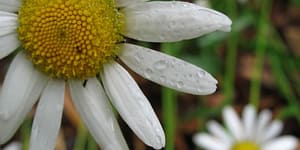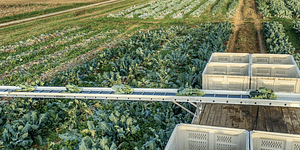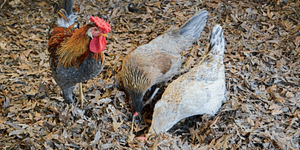Save Your Soil the Power of Pee

It’s time to roll up your sleeves and get down into the dirt – but you may want to grab a bucket, especially first thing in the morning. Nutrient loss in our soil is an ongoing issue for some gardeners, but you may find help in an unexpected—liquid—form.
The following is an excerpt from The Resilient Gardener. It has been adapted for the web.
Using human urine is a much simpler proposition than using humanure, which also contains feces. Urine from healthy people generally doesn’t contain pathogenic bacteria or parasites an is in fact sterile at the time it’s excretes. With out current vegetable garden, pee is off limits because we sell some of the vegetables. I feel pretty confident about the safety of pee, but using it on other people’s vegetables isn’t something I would want to have to explain to anyone. But during prior eras of my gardening life I used pee regularly, though intermittently. I was never so short of fertility as to need to collect all the pee. Instead, I just used it in situations where it was particularly advantageous.
Once upon a time I did various experiments on nutrient-poor grass. I found that a 1:10 dilution of pee did not burn the grass, and it made it green up within a few days after just one dose from a watering can.
I collect my first pee of the morning in a bucket. Later pee is pallid stuff. Both color and odor suggests that the first-early pee is more concentrated. My guess is that there are more nutrients in the first batch of pee after waking than in all the pee put together for the entire rest of the day. So I collect the first pee and forget the rest.
I use the pee right away. It has a strong ammonia smell, which indicates nitrogen escaping from it that I would rather have in the garden. In addition, within a few hours of sitting around, the pee grows bacteria. I doubt the bacteria would hurt anything, but I do know they are eating up the nitrogen I want for the plants. When I use urine, it is usually because I want a quick shot of soluble nitrogen, not nitrogen tied up in bodies of bacteria. So whenever I use pee, I have used it promptly.
When I use the diluted pee in the garden, I dilute it in a watering can and water both the plants and the ground. Plants can take up nutrients through their leaves as well as their roots. I didn’t use the pee on plant parts I was going to eat, such as lettuce or green onions. It was probably safe to do so, but I didn’t think it was appetizing. But the pee sure worked well on the corn and squash.
If I were short of fertilizer and needed to save and use all the family pee, I would encourage people to pee in buckets and defecate elsewhere. It’s just so much easier to use pure pee.
If you have plenty of leaves in fall, just pile them up and wet them with diluted pee. The extra nitrogen is all they need to compost beautifully.
Recommended Reads
Recent Articles
Oxeye daisies are one of the most important plants for pollinators including beetles, ants, and moths that use oxeye daisies as a source of pollen and nectar. Instead of thinking about removing a plant like oxeye daisy, consider how you can improve the fertility and diversity of habitat resources in your home landscape, garden, or…
Read MoreSo you want to start reaping your harvest, but you’re not sure where to start? Learn how to break down the options of harvesting tools!
Read MoreWhat’s so great about oyster mushrooms? First, you can add them to the list of foods that can be grown indoors! They are tasty, easy to grow, multiply fast, and they love a variety of substrates, making oyster mushrooms the premium choice. The following is an excerpt from Fresh Food from Small Spaces by R. J.…
Read MoreEver heard the phrase, “always follow your nose?” As it turns out, this is a good rule of thumb when it comes to chicken manure. Composting chicken manure in deep litter helps build better chicken health, reduce labor, and retain most of the nutrients for your garden. The following is an excerpt from The Small-Scale Poultry…
Read More









